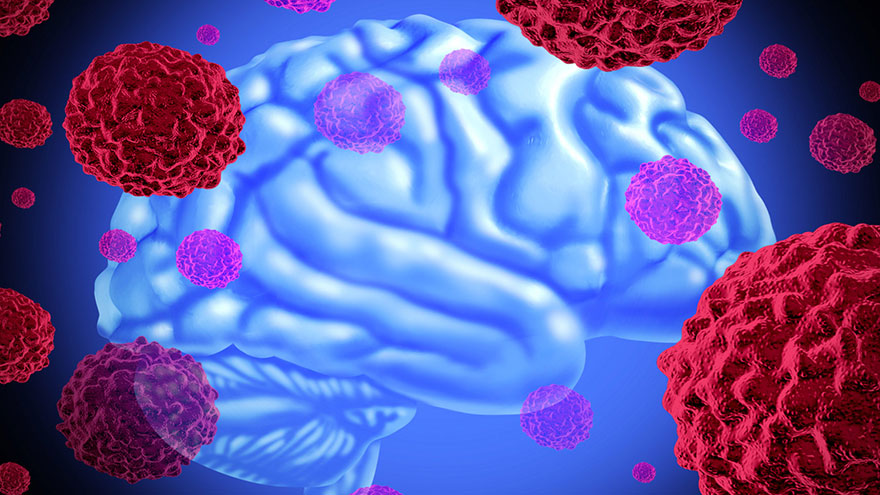Brain Cancer Fast Facts
Brain cancer develops due to a growth of abnormal cells. When you have brain cancer, these abnormal cells will eventually create a tumor. Tumors can be classified as benign (not cancerous) or as malignant (cancerous). There are more than 120 different types of tumors of the brain.
However, many types of brain tumors are benign. Tumors of the brain can be formed in two ways. A primary tumor is the result of the tumor growing within the brain and staying localized. Metastatic tumors first materialize as cancer elsewhere.

Primary Brain Tumors
When you develop cancer within the brain, the tumor will grow directly in the brain or near to it (such as in the pituitary gland or brain-covering membranes). Tumors occur as a result of normal cells developing mutations within their DNA.
Normal, healthy cells live and then die. Mutated cells continue to grow and multiply at fast rates. Eventually, the accumulation of abnormal cells will create a tumor that results in cancer. Developing a primary brain tumor is far less common than developing metastatic tumors.
Metastatic Brain Tumors
Metastatic brain tumors are tumors that develop as a result of cancer forming in other areas of the body, such as the lungs, breast or kidneys. Sometimes the development of a brain tumor is a sign that cancer is already present in your body.
Metastatic tumors can also be discovered after already being diagnosed with some other from of cancer.
Risk Factors
There are many factors that can contribute to the development of brain cancer. Many brain cancers develop in Caucasians. Age also plays a role. As we get older, the risk of getting a brain tumor increases, especially in people 45 and older. However, there is one type of brain cancer, medulloblastoma, that occurs only in children.
Radiation exposure, such as ionizing radiation, can cause brain cancer. There is no evidence that cellphones, microwave ovens or power lines cause brain tumors. Chemical exposure and a family history are also potential factors in the development of brain cancer.
Grading
If you are diagnosed with having a brain tumor, the tumor is then graded by how it appears under a microscope. There are four stages. Stage I is when the tissue is benign–cell growth is normal. Stage II shows the developing signs of a malignancy, with cells looking not as normal as they should.
Stage III is where malignant tissue is found, and cells are beginning to form quickly. Stage IV has cells that are very abnormal and are multiplying. A low-grade tumor can eventually become a high-grade tumor. According to the National Cancer Institute, the incidence of a low-grade tumor becoming a high grade tumor is higher in adults than in children.
Symptoms
Sometimes symptoms of a brain tumor can mimic other conditions, which is why it is important to seek medical attention if any of these symptoms develop. Symptoms characterized by brain tumors include a severity or increase in headaches, nausea and vomiting without fever, blurred or double vision and loss of feeling in an arm or leg.
Other symptoms include losing your balance, difficulties in speaking, severe mood swings (such as being fine one moment, and bursting out the next), seizures and hearing issues.

